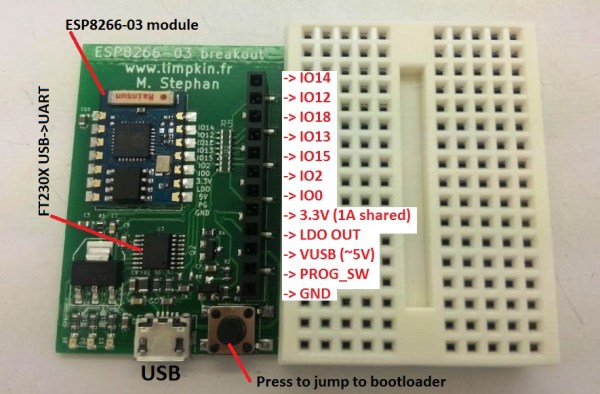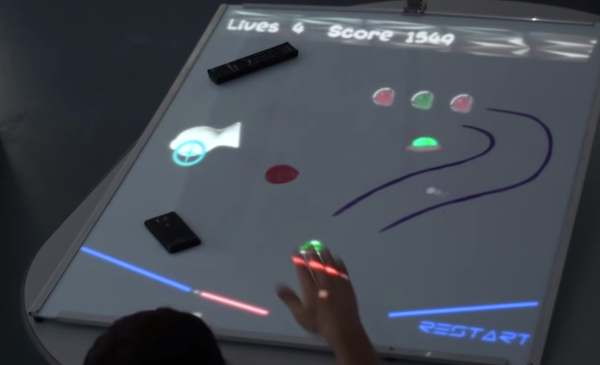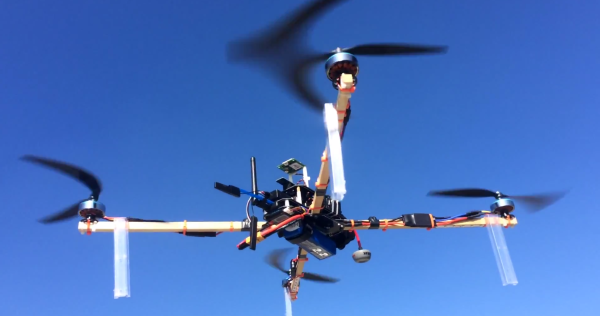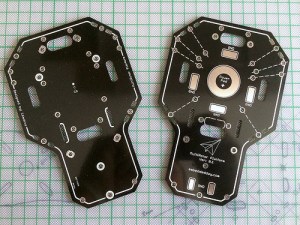In the last few weeks we have been seeing a lot of ESP8266 based projects. Given this WiFi module is only $3 on Ebay it surely makes sense using it as an Internet of Things (IoT) platform. To facilitate their prototyping stage I designed a breakout board for it.
The board shown above includes a 3.3V 1A LDO, a genuine FT230x USB to UART adapter, a button to make the ESP8266 jump into its bootloader mode and a header where you can find all the soldered-on-board module IOs. One resistor can be removed to allow 3.3V current measurement, another can be populated to let the FT230X start the bootloader jumping procedure. All the IOs have 1k current limiting resistors to prevent possible short-circuit mistakes. Finally, the board deliberately doesn’t use any through hole components so you may put double-sided tape on its back to attach it anywhere you want. As usual, all the source files can be download from my website.






 The silk screen of the PCB has dotted lines showing the different angles possible for one pair of motor supports. One set makes a perfect “X” for traditional quadcopter flight. Another reduces the angle between front and back struts for higher-performance quad flight, while the last set is intended for a tricopter setup.
The silk screen of the PCB has dotted lines showing the different angles possible for one pair of motor supports. One set makes a perfect “X” for traditional quadcopter flight. Another reduces the angle between front and back struts for higher-performance quad flight, while the last set is intended for a tricopter setup.










